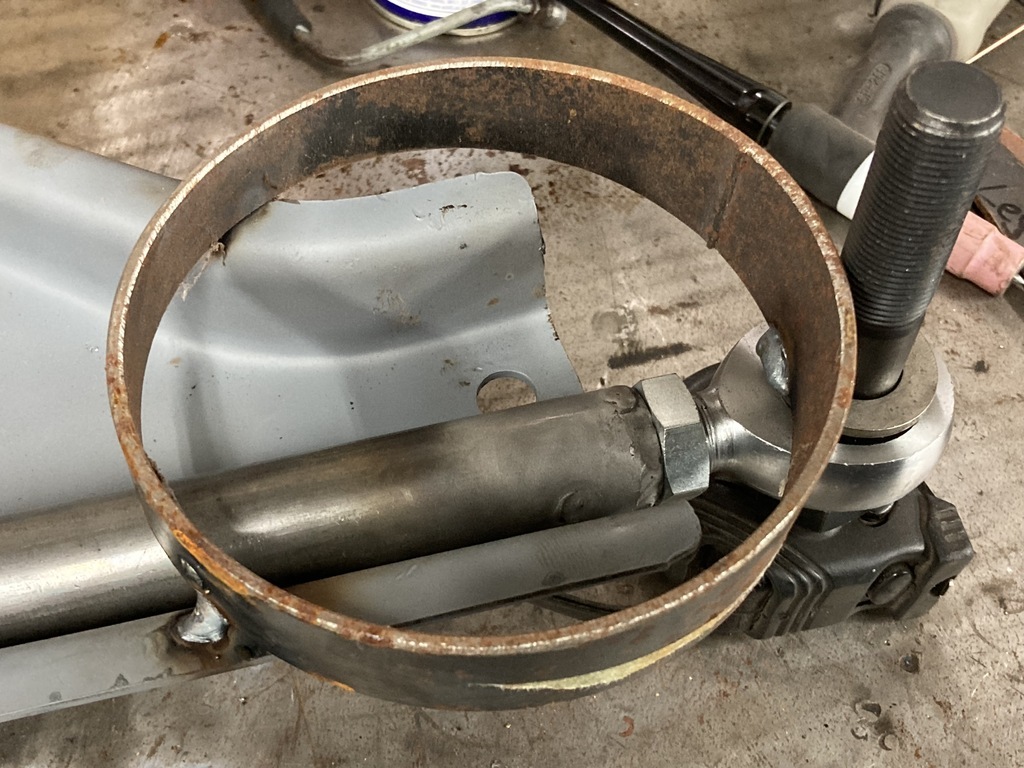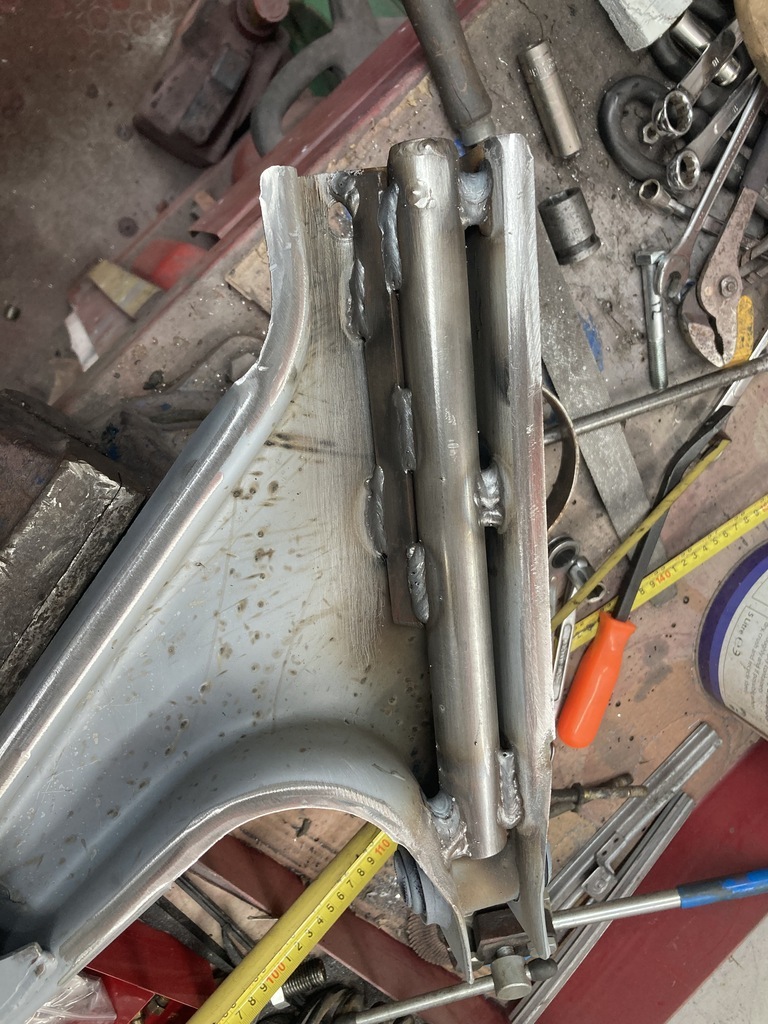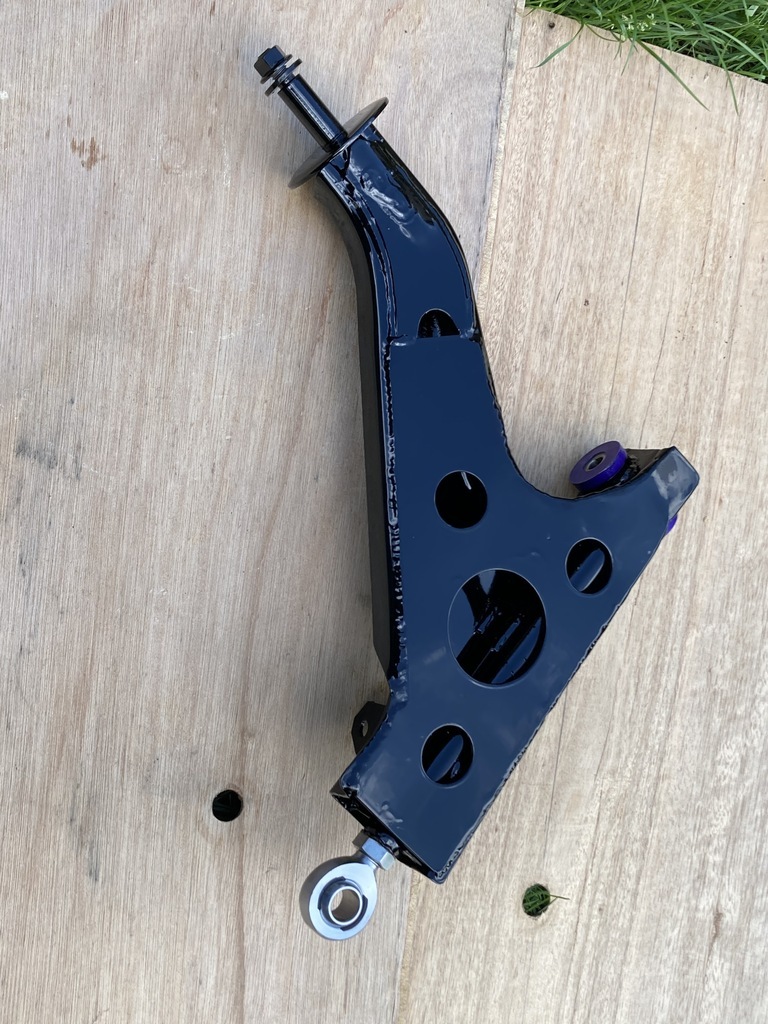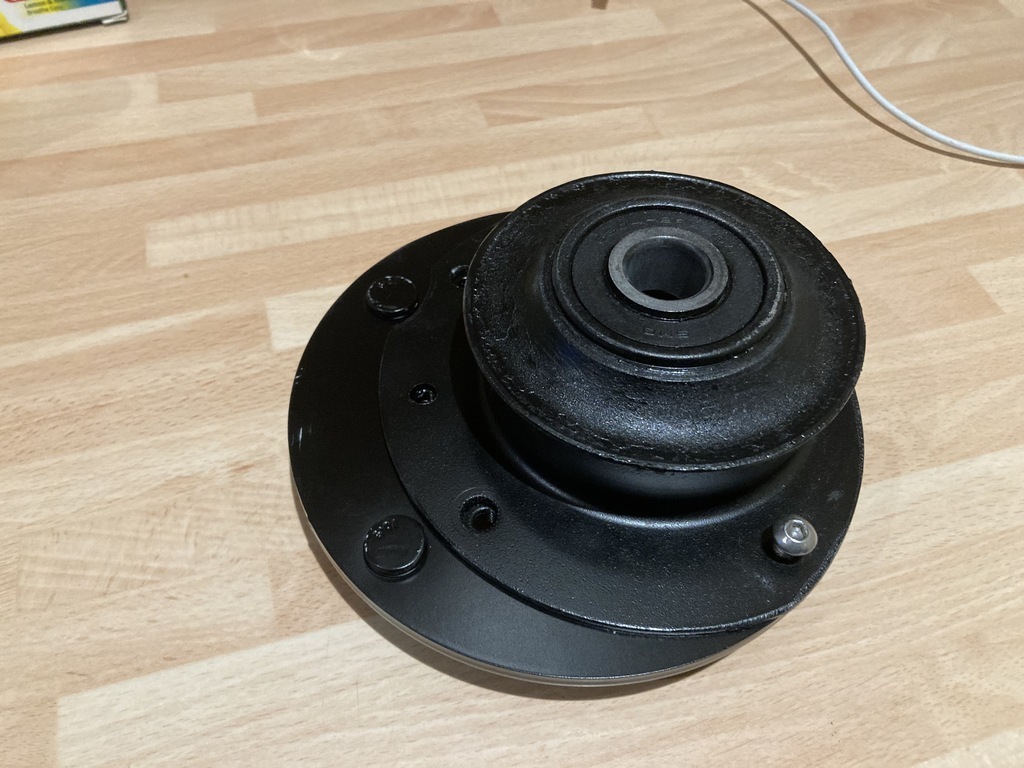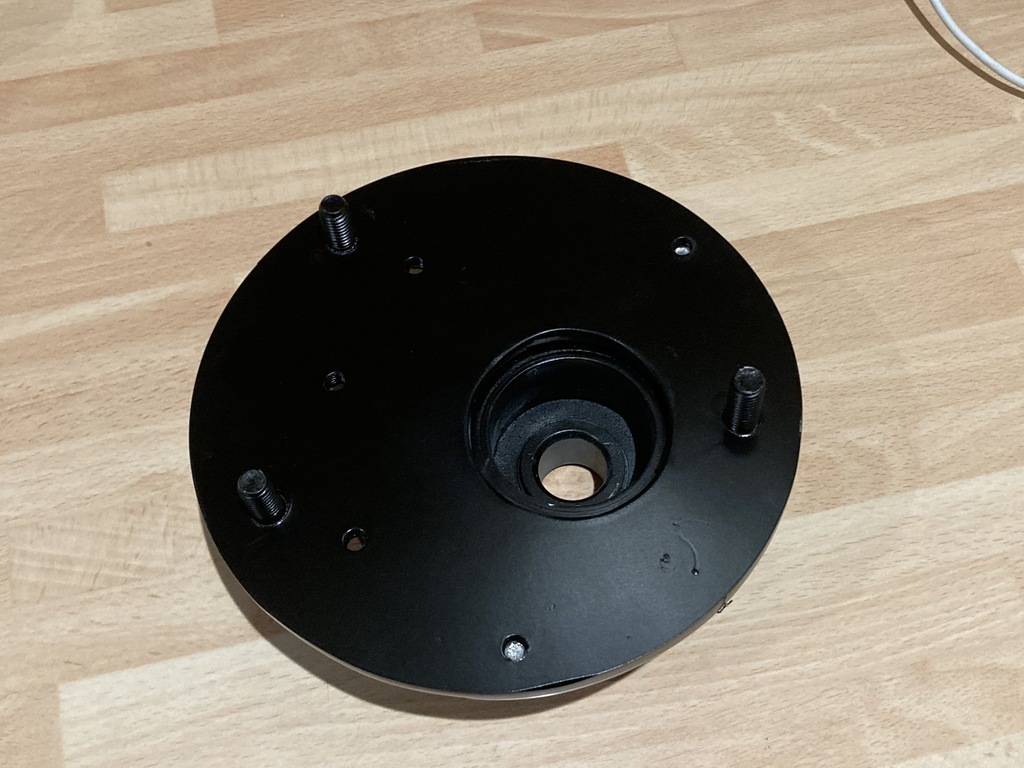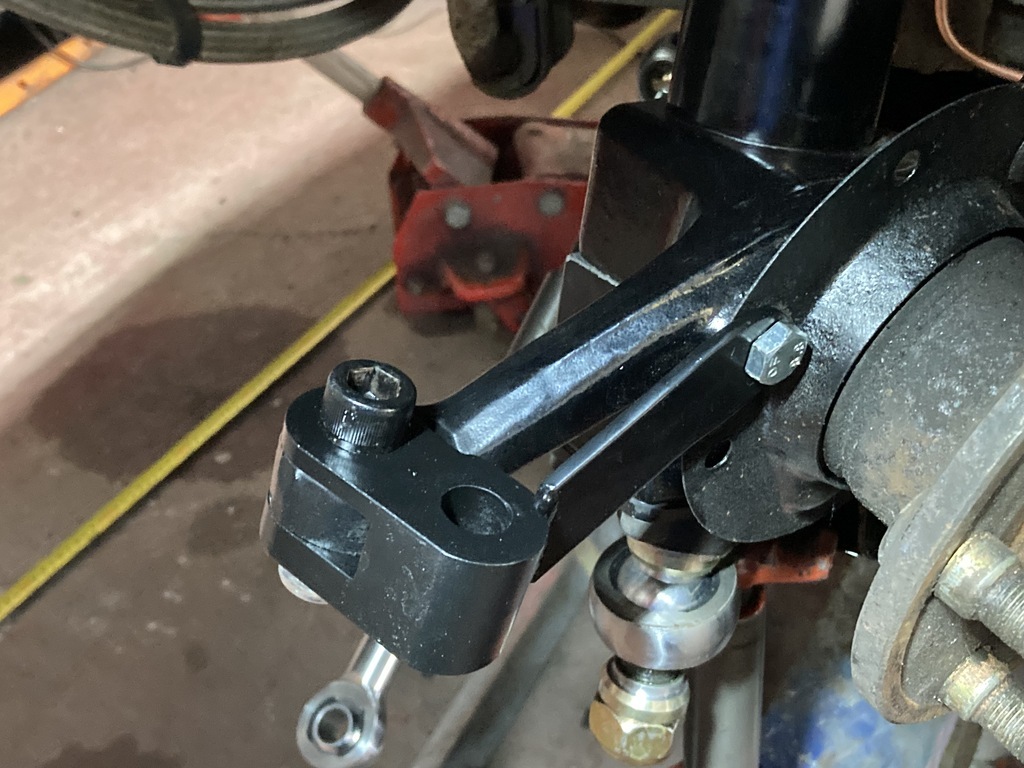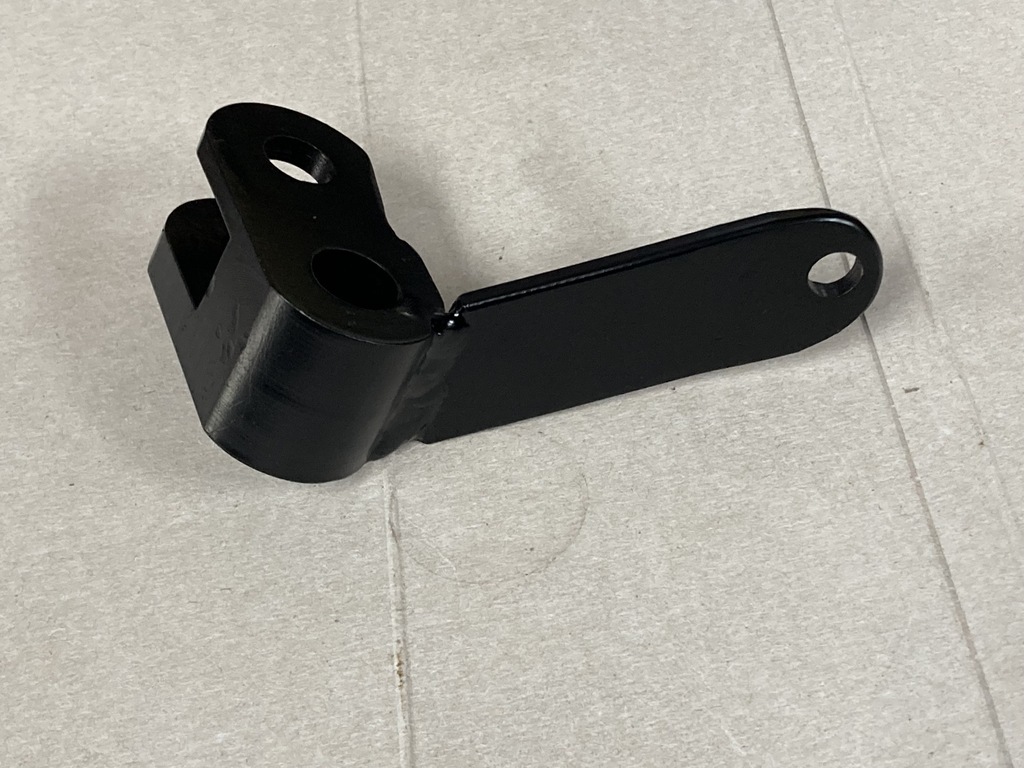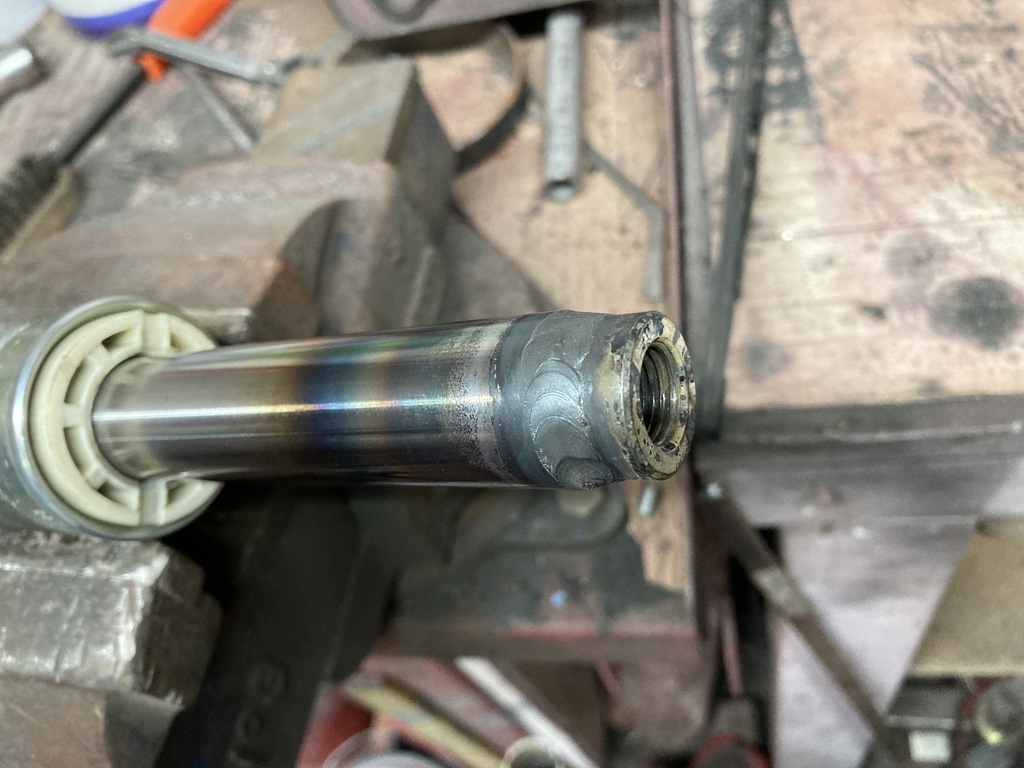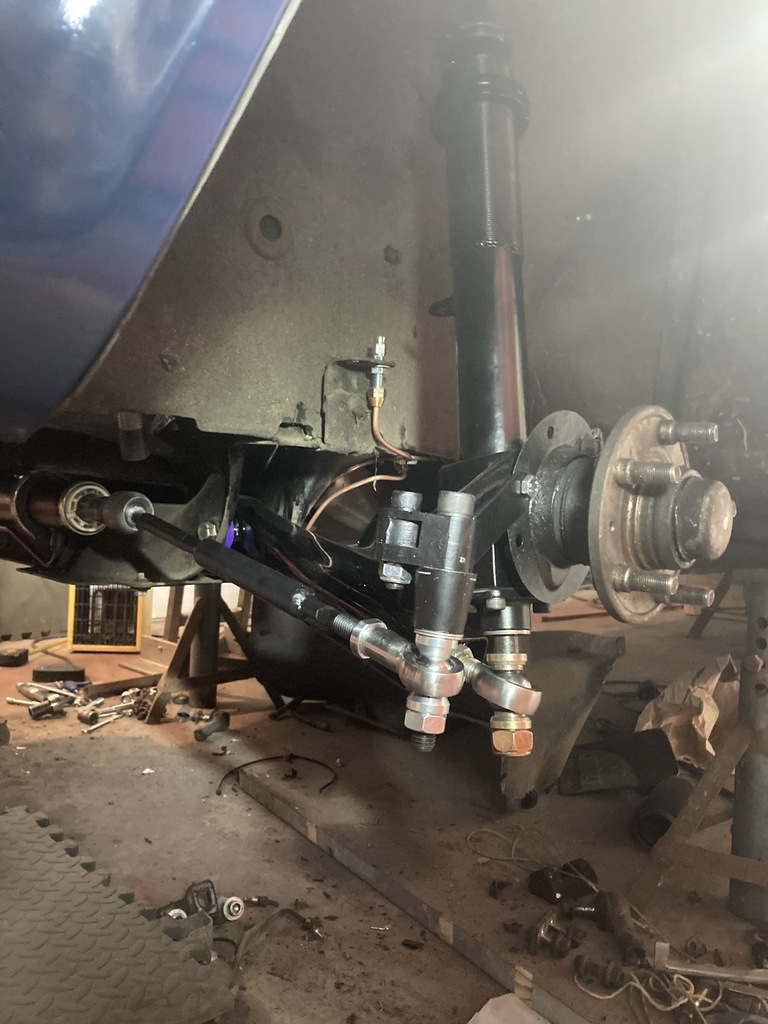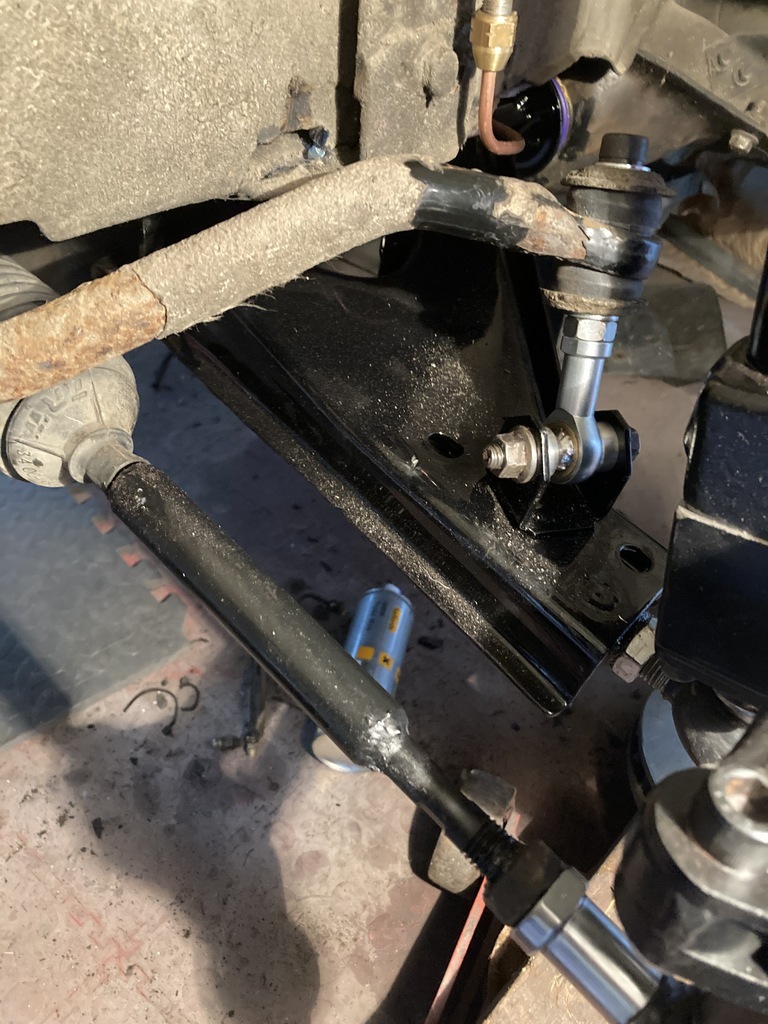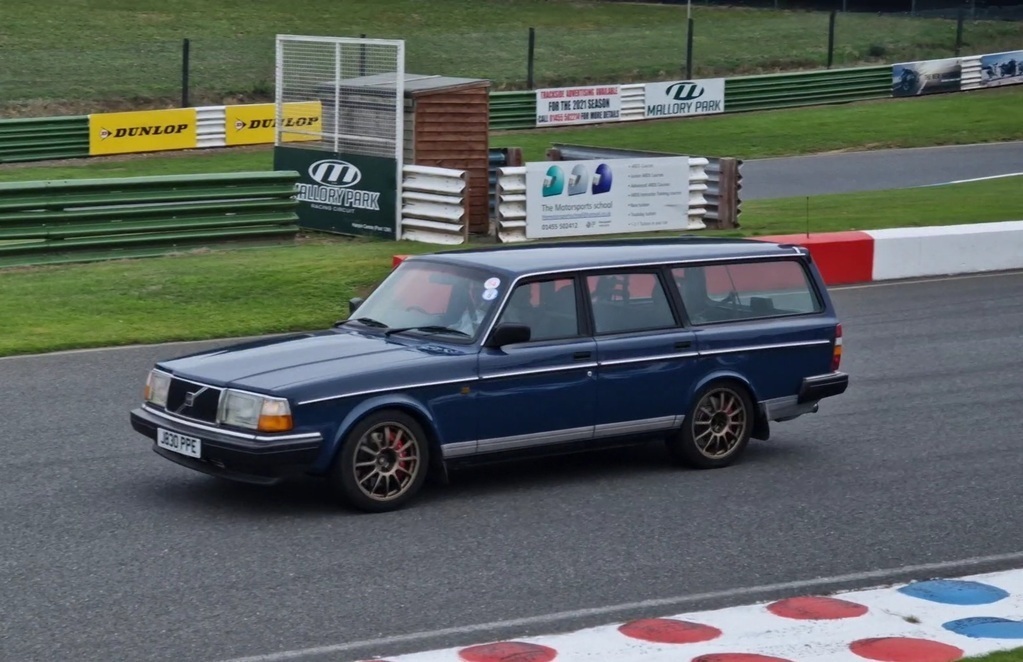Hi,
You won’t remember, but I met you at retrorides a few years back and had a chat to you about your car- think it was 2019?
Anyway, you may find the photos in the following link from when I visited the Volvo museum in early 2020 interesting. I took some photos of the suspension on the group A 240, showing the adjustable a-arm setup, and how Volvo moved the anti-roll bar link to the strut-tube. There’s also some photos of the rear suspension, although it sounds like you’re going to swap the rear for a fully independent setup at some point.
There was a thread on turbobricks where a machine shop was thinking about replicating the group a suspension setup, might have been sts machining.
You may find the following text interesting as well- it’s a summary of the group-a cars history and setup, which I copied from somewhere some time ago.
Cheers
forums.turbobricks.com/showthread.php?t=355000Copied summary:
Car 44 (240 RXT, RH-drive) virtually a new car built-up in Australia during 1986 using imported Volvo Motorsport parts with the latest 1986 GpA evolution / homologation specification.
This new car only raced in two endurance events at Sandown and Bathurst, in late 1986.
In 1987, the (three) Australian cars were returned to Sweden and later sold to Hans-Åke Söderquist, owner of SRS - (Scandinavian Racing Service.)
Short History - Volvo 240 Turbo Group A
FISA Group A homologation - 1 March 1982
In 1982 Greger Pettersson brought his Volvo-Cup racecar to Silverstone and competed in the ETC Tourist Trophy. The car was slightly modified from Cup spec and everyone in the paddock got a laugh when they saw the Volvo. Anders Olofsson and Peggen Andersson were supposed to drive, but the car didn't finish.
With new GpA rules, the 240T had potential to be very competitive under the weight / capacity formulae, and two prototypes were developed.
In 1983, Thomas Lindström Racing competed in the ETC with TL001. With early race success, Thomas lobbied hard to get the Volvo Company involved, and together with Bo Vikås (pronounced Wiiikas), the then Volvo Turbo manager, they eventually succeeded and the Volvo Motorsport Division (VMS) was formed.
In 1984, a number of GpA Volvo teams competed in the ETC. This was a serious racing campaign to develop the cars to a standard capable of beating the Walkinshaw team V12 Jaguars & 635 CSI BMWs.
The Volvo Magnum Racing team where the seasons fastest Volvo, eventually winning the September 84 ETC round in Zolder, Belgium with drivers Ulf Granberg and Robert L.Kvist.
In 1985 Team Eggenberger with VMS support built and developed 2 Volvo GpA cars to such a standard they won the 85 ETC title against the V8 Rovers.
In 1986, RAS Sport (Nordica sponsored) along with VMS support built and developed up to 6 GpA cars that dominated the ETC series but were eventually beaten in points by Rover.
Late in 1986, Volvo officially withdrew support for GpA teams, and after 3 exciting years, the Volvo Motorsport Division was closed.
A number of privateer teams using VMS homologated components continued to race in championships around the world between 1983 and 1988, doing well in many events. Cars that remain are now collector's items, typically raced in popular historic racing events.
Specifications.
Paint scheme
Nordic stripes - The four shades of blue represent the varying depths of water in the ocean, the white represents snow, and in modern times black represents the tar on the racetrack. The flair tail on the stripes accentuates speed. (Designed by John Amundsen)
Body - four coat VMS white - colour code Volvo # 189
Rims - The magnesium BBS centre - Volvo # 177
Running boards - area under the Nordic stripes - Flat Black
86 VMS bumpers and the upper bumper seals - Grey # 468
Race Engine
B21 ET engine (2,127 cc)
4 cylinder.
FIA turbo factor was 1.4 placing it in the Under 3,000cc weight class.
Volvo raced for outright honours.
Power up to 257 kW or 345 hp (with water injection).
1986 RAS Sport engines produced up to 375 hp
Hardend block
R-Sport hardened M-rods
Mahle forged skeleton pistons Link - (free under rules)
1986 spec Evo2 flat top pistons, reproduced by JE, USA. JE Piston 1 - JE Piston 2 - JE Piston 3
Rebuilders - Using a non decked block
Evo2 pistons are approx 2 mm short of std block height.
Compression 7:1 (free under rules)
Forged crankshaft
Special oil tray (pan) with oil collectors
Radiator (big) twin electric fans + Engine Oil cooler. (free under rules)
Single plate competition clutch (free under rules but must have same number of plate(s))
Intercooler - all Aluminium alloy
German designed & built by 'Längerer and Reich'.
Approx 200 units hand built.
Cylinder Head
8 valve - type 531 or 405, special alloy ported heads (1 mm increase in port diameter allowed) 44 mm inlet, 35 mm exhaust, sodium (NaCl) cooled valves on exhaust
Cylinder Heads were modified by Grottis, in Sweden, famous for building the best GpA heads.
Grottis modified all the Magnum Team heads, and in 1986 modified heads for VMS. Grottis heads were based on the 405 (VMS spec with smaller coolant passages).
Grottis heads are stamped with his name and No. Later VMS heads were built on the 531 casting.
Camshaft - GpA or T5 plus many others
Special water-pump, std water channel plugged (instead, holes drilled in the engine block to gain increased cooling capacity)
Exhaust manifold, *3" exhaust system (no silencer, outlet under right door)
Turbocharger: Garrett AR T3/T4 Group A (many different), Boost pressure typically 1.55 bar, 21-23 psi, comes on boost at 3,000 rpm with max output around 6,400-6,500 rpm & revs to 7,500
Engine Management
Volvo / Bosch E-ZK Ignition
Engine management
The ECU featured a 14 sensor based programmable engine management system (includes 'knock sensor') modified for more map points.
Volvo were one of the first companies to use programmable engine mangement in GpA.
A second ECU - termed WT (Water ,Turbo) controlled boost pressure, water injection, knock control (to retard ignition timing down to a single plug/cylinder), and later rear-wheel slip.
The later ECU engines were 20% more fuel efficient than earlier mechanical K-Jet CIS engines. Interactive telemetry for remote tuning
Electronic Traction Control (ETC) - Wheel speed sensors monitor rear wheels relative to front. Any difference results in a reduction in boost pressure, then followed by a cut in fuel supply to middle cylinders 2 and 3.
This system was built in new 1986 RAS cars for Peggen Andersson and Mauro Baldi. The car was tested but never raced as it was brand new and there was a risk of "child problems".
The 'traction control car' (see pic below) was faster than the racecar during testing before the race, and again on the test on Monday after the race. [tested at 1986 ETCC round at Estoril, Portugal ]
This racecar #605 stands in the Volvo Museum and features the developments of front suspension and an LED display "inspection system" dashboard.
Injectors:
Group A (K-Jet mechanical)
Bosch 'Gold' injectors, were a race spec injector made for Volvo and not possible to obtain for many years now.
530 ml/min on 1, 2 and 4th cylinder, 580 ml/min on the 3 cylinder), (magnetic valves on 2 & 3rd injector to serve as a antispin system - cuts fuel when spining).
Reportably they were made of a Porsche shell with Volvo turbo core. They have a opening pressure at 3 bar (43,5psi) and give about 600ml/min at 8bar (120psi) pump pressure.
Air sensor plate with changeable cones - to run with optimized control pressure and air/fuel ratios at all revs, and to suit different race tracks
Water Injection
Water spray mist was used to increase engine efficiency and to cool exhaust valves. System components were a modified Bosch Jetronic fuel injection (with airmass meter or map sensor, high pressure pump and four "yellow" Bosch EFI injectors).
Water injection was also sequential, meaning the injector only sprays on the intake stroke when the valve is open for minimum water use. The amount of water injected is around 10% of the regular fuel, the solution being a mix of water, alcohol and cutting fluid, the latter used to save the injectors from rust.
Fuel tank
120 litre safety tank (Group A regulations), * Quick fill system
Two pre-pumps feeding catch tank, plus two high pressure main pumps (serial or parallel connected)
Gearbox / Clutch
Getrag (M51 sport) 5 speed sync gearbox. Dogleg shift pattern Rev-1st, 2-3, 4-5.
Gear set spur wheels were nitride hardened to handle higher torque.
Gearbox had an oil-cooler system with radiator and pump
Getrag GpA homologation ratio's were:
1st - 2.328:1, 2nd - 1.675:1, 3rd - 1.353:1, 4th - 1.145:1, 5th - 1.000:1
Clutch and flywheel - Single plate competition (AP sinter clutch) (hydraulic) (clutch free under rules but must have same number of plate(s))
Front Suspension and Steering
Volvo - one of the first companies to useadjustable front suspension setup in GpA.
Front struts - Bilstein 4 way adjustable
Springs - in 1985 special Eggenberger. Thomas Lindström liked 800 lb front and 600 lb rear
Alloy control arms, see Link (two types, everything adjustable) The gold anodized color alloy control arms were originally developed in Australia, gold being the signature of Australian development (not Eggenberger).
The later VMS version was only used on the new Car at Estoril in Europe.
Swaybars - adjustable length, metal pivot mounts, many different diameters, solid and tubular
Servo steering (in most cases a ratio of 2.6 or 3.5 )
Steering shaft in aluminium (1985 homologation allowed hollow shaft)
Bushes - Uniballs and bearings
Special front hub for center bolting system (left and right hand threads)
Rear Axle
Axle Housing - Aluminium Alloy, Dana 1031 with bolt on tubes, steel (two types) with 1.5 degree negative camber + sensors for antispin system. Later 1985 homologation included a lightweight Al.Alloy / carbon-fibre unit.
Special drive shafts - (1985 homologation allowed hollow axles) shafts setup for negative camber and wheel center hub (knock-off) bolting system (left and right threads)
LSD - Limited slip differential : Dana-Spicer or ZF (Zahnrad Fabrik, Germany). Only 30% lockup to minimize understeer in low speed corners. (free under rules but must fit approved housing without any modifications)
Gearing ratios 2.86, 3.15, 3.31, 3.73, 3.91, 4.10, 4.56 4.88.
Diff centre fitted with oil cooling system - pump and radiator. (must use original lubrication principle, but additional cooling allowed)
Rear Suspension
Adjustable upper control arms (bushing and uniball)
Control arms - steel or aluminum alloy. Kevlar control arms were later developed by RAS, being 60% lighter
Panhard rod (adjustable with uniball ends)
Bilstein shocks
Special Eggenberger springs, Thomas Lindström liked 600 lb rear
Swaybars (many different diameters, solid and tubular)
Brakes
Huge Lockheed brakes with big ventilated 330 mm brake discs on front, and 280 mm on rear.
All VMS cars were fitted with the homologated Lockheeds.
Hydraulic handbrake
Brake balance adjuster
Steel forged brake tubes
Wheels / Tires
BBS, Compomotive or Speedline - center hub (knock-off) attachment system, 16-17", 8"-9" split or mono wheels.
Tires - Pirelli D3 compound (16" x 8 1/2" Avons. In Australia, 1986, Pirelli D3 for the first 4 rounds, then Dunlop tyres. In DTM, 1986 Brigestone 17" and Goodyears were also used. In DTM, Ronal rims
When we started on Bridgestone we used Ronal centre with BBS rims.
Speedline 17" Rim (see picture) were introduced in late 1986, and were only fitted with Bridgestone and later Michelins tyres. Used in the last two rounds of the 1986 ETCC.
Typical torque for centre lock wheel hub is a hefty 650-750 ft.lb (880-1020Nm)
Wheels - Can be any make or design as long as they fit the bodywork rules. Max measured width of tyre 10" for Volvo
Body
Bit over class minimum of 1065 kg, (later RAS models achieved this).
FIA turbo factor was 1.4 placing it in the Under 3,000cc weight class. The lighter weight class was quite an advantage compared to the heavier Over 3001cc class with V8 engines of Rover and Holden Commodore.
Volvo raced for outright honours. From 1988 the FIA turbo factor was increased to 1.7.
Shells - custom picked and assembled to ensure structural rigidity in important areas
Standard body work (some acid diped to be lighter!)
Steel doors (acid diped)
Thinner front bonnet and rear boot lid - (aluminium not allowed)
All Group A cars 1983 to 1987 ran with the 1982 Flat bonnet, grill and surrounds - being a little more aerodynamic
Thinner windows (light weight) , *Plastic front headlights
All trim below the dashboard (ie carpeting and soundproofing, including doors may be removed)
Rear wheel housing widened 1" (to manage 8.5" wide wheels)
Rollcage - early models aluminum alloy from Matter. Later CAD designed Al.alloy (20 parts, attached to each other with bolt joints made by Rubi )
Racing seat, * 6 point harness
Performance
Volvo GpA 240T M51 ratios
Gear change at 7,000 rpm, 3.73:1 diff
0 to 40mph - 3.4secs
1st - 2.328:1 = 59 mph
0 to 50 mph - 4.3secs
2nd - 1.675:1 = 82 mph
0 to 60 mph - 6.0secs
3rd - 1.353:1 = 102 mph
0 to 90 mph - 9.8secs
4th - 1.145:1 = 120 mph
0 to100 mph - 12.5secs
5th - 1.000:1 = 138 mph
0 to 125 mph - 23.5secs
Top speed (depending on final gearing)160 mph or 260 k
GpA Modifications allowed under FISA Group A homologation rulese.g. 1985 FIA rule 177 and 178:
Applications for changes must be submitted by the car manufacturer. FISA Volvo 240 Turbo Homologation No. A-5020 valid from 1982.03.01 Group A. (Homologation lasts for 5 years, so the 240 was at the end of the road in 1988)
Full suspension geometry and layout. (Original mounting points must be preserved)
Engine internals including camshafts, crankshaft, valves.
Other engine components can be machined. The original production engine block must be preserved
Engine peripherals (Radiators - water,oil, Intercooler)
Engine management
Braking system pads, discs calipers may be totally replaced
Gearbox, gear ratios, number of gears and gear selection
Differentials - LSD allowed
Final drive ratio
Electric equipment
Roll cage design
Headlights (original casings must be preserved)









